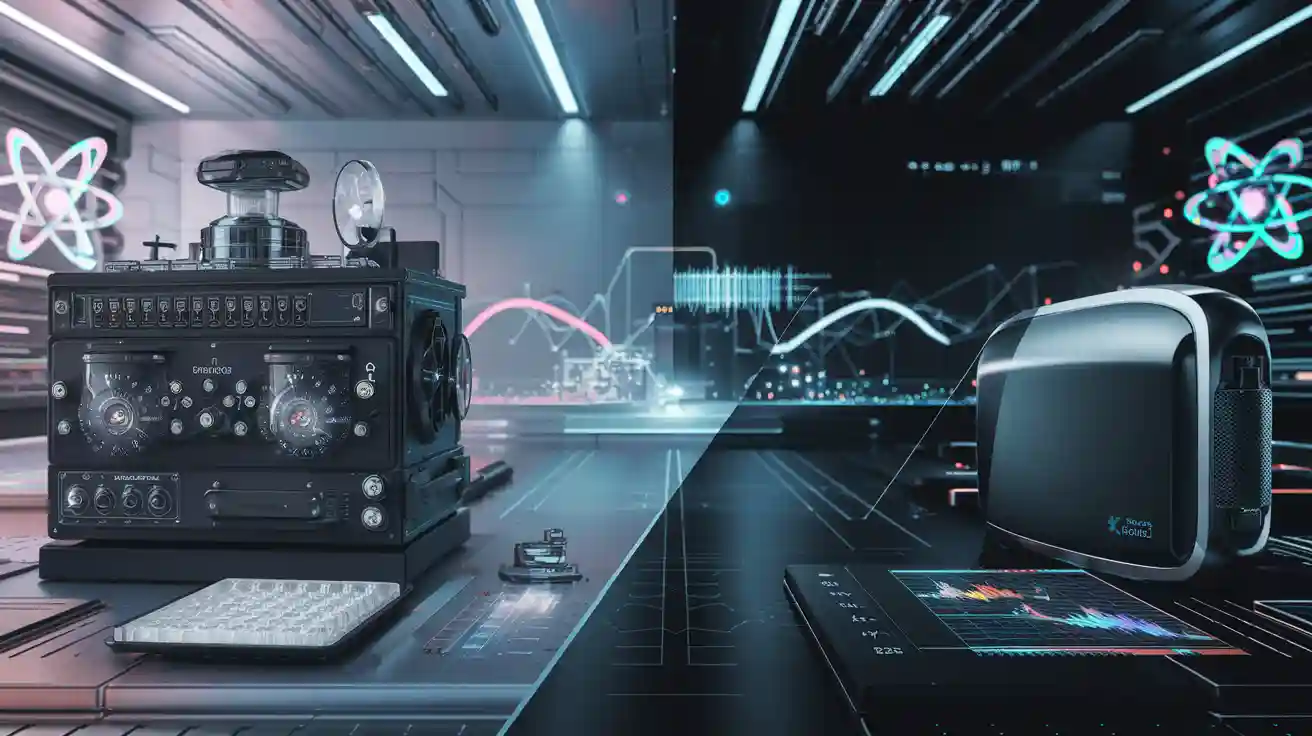ما هو التحليل الطيفي للأشعة السينية المستخدمة?
From the gleam of fine jewelry to the invisible safety standards in electronics, X-ray fluorescence spectroscopy (XRF) is the silent powerhouse behind the scenes. Businesses across industries rely on it to reveal a material’s true composition swiftly and accurately. Whether it’s verifying the purity of gold, ensuring compliance with environmental laws, or authenticating industrial alloys, XRF provides actionable insights that protect investments, ضمان الجودة, and maintain customer trust.

Unlike destructive testing methods that damage or destroy valuable samples, XRF allows professionals to perform precise, non-destructive analysis on metals, مساحيق, السوائل, and even coatings. Its combination of speed, دقة, and minimal sample preparation makes it an indispensable tool for professionals who need reliable answers—fast.
How X-Ray Fluorescence Spectroscopy Works in Real-World Applications
في جوهرها, XRF measures the unique “fingerprint” of elements in a sample. When materials are exposed to high-energy X-rays, their atoms emit fluorescent X-rays specific to each element. Detecting and measuring these emissions allows the XRF instrument to identify what elements are present and in what quantities. But beyond the science, what truly matters is how this technology translates into real-world solutions.
Precious Metal Analysis: Protecting Trust and Value
In the precious metals industry, trust hinges on knowing exactly what a piece of metal contains. المجوهرات, مصافي, مكاتب الرهونات, and recyclers depend on XRF to confirm the purity and value of gold, فضة, بلاتين, البلاديوم, والمعادن الثمينة الأخرى. XRF can quickly distinguish between solid gold and gold-plated items, detect alloy compositions, and verify high-purity metals essential for manufacturing or investment.
على سبيل المثال, VRAY Instruments offers specialized محلل الذهبs such as the VR-X5 XRF Gold Analyzer و VR-H5 Handheld Analyzer, both designed for fast, precise purity testing. These instruments support professionals who need to guarantee authenticity for buyers and sellers alike.
Recycling and Sustainability: Turning Waste Into Value
Precious metals often end up in electronic scrap, obsolete jewelry, or industrial waste. Efficient recycling demands precise analysis to identify valuable elements before refining. XRF provides recyclers with a fast, reliable method to determine metal composition and estimate potential returns. This reduces waste, minimizes environmental impact, and recovers significant economic value.
VRAY’s portable solutions, مثل VR-M5, allow recyclers to test materials directly at collection points, helping maximize profitability and ensure regulatory compliance.
Manufacturing Quality Control: Keeping Standards High
In manufacturing industries, even tiny variations in alloy composition can lead to costly failures or product recalls. XRF ensures manufacturers maintain rigorous quality control over raw materials and finished products. From checking the purity of gold used in jewelry production to verifying complex alloys in electronics, XRF provides immediate, precise results that reduce production errors.
In the jewelry sector, instruments like the VR-XAU و VR-XD1000 analyzers from VRAY deliver top-down or bottom-up analysis, allowing precise measurements of coatings, micro-samples, and irregular surfaces. These features are critical for manufacturers who produce intricate or high-value items and need detailed quality documentation.
اكتشاف التزوير: Protecting Reputation and Revenue
Counterfeit precious metals threaten both reputations and financial security. Fake gold bars, misrepresented alloys, and fraudulent jewelry items undermine trust and pose significant risks to buyers and sellers. XRF helps identify counterfeit goods by analyzing the elemental composition of suspect materials, quickly revealing mismatches between declared and actual content.
For businesses involved in trading or resale, instruments like the VR-T9, with ultra-high precision detection (± 0.001 ٪), can detect even subtle differences in metal purity. VRAY’s advanced algorithms and spectral comparison tools help users spot anomalies, protecting both consumers and business reputations.
الامتثال التنظيمي: Meeting Legal Standards
Environmental and safety regulations, such as RoHS (Restriction of Hazardous Substances), require industries to monitor specific elements like lead, cadmium, or mercury in products. Non-compliance can result in severe fines, product recalls, and damage to brand reputation. XRF is a fast, non-destructive solution for screening materials and verifying compliance, ensuring businesses remain within legal limits.
Instruments like VRAY’s VR-S6 BENCHTOP XRF مطياف are tailored for these tasks, providing reliable analysis of solids, السوائل, and powders across a broad range of elements. Their compact design and intuitive operation make them practical for labs or crowded production environments.
Research and Development: Pushing Technological Boundaries
Beyond industry applications, scientists and researchers use XRF in developing new materials, exploring nanotechnology, and studying environmental samples. Its precise elemental detection is invaluable for understanding the composition and behavior of new substances, leading to breakthroughs in technology, medicine, and materials science.
VRAY’s extensive range of laboratory-grade instruments supports researchers who require accurate, reproducible results to push the boundaries of knowledge.
توصيات عملية للمستخدمين

If you work with precious metals or any materials where composition determines value, XRF should be part of your toolkit. When choosing an محلل XRF:
- Consider the types of samples you analyze (solid, powder, liquid)
- Evaluate the elements and detection limits relevant to your business
- Assess whether you need portability or a dedicated lab instrument
- Think about future needs for regulatory compliance or high-precision analysis
VRAY’s experienced team offers guidance to help businesses select the right solution, ensuring both accuracy and a solid return on investment.
الأسئلة المتداولة
س 1: Is XRF testing safe for operators and samples?
أ1:نعم. XRF uses low-level radiation safely contained within the instrument. Operators are protected, and the sample remains undamaged because testing is non-destructive.
Q2: Can XRF detect precious metals through coatings or plating?
أ2:It depends on coating thickness. Modern XRF instruments, like VRAY’s top-down analyzers, can measure both surface plating and underlying materials with high precision.
س 3: How long does an XRF analysis take?
أ3:Most measurements are completed in seconds to a couple of minutes, depending on the desired precision and the elements being analyzed.
س 4: Can I use a handheld XRF analyzer for gold buying or recycling?
أ4:قطعاً. VRAY’s handheld solutions like the VR-H5 are perfect for quick, on-the-spot testing, offering mobility without sacrificing accuracy.
س 5: Why invest in a professional XRF analyzer instead of cheaper اختبار الذهبق?
أ5:Professional XRF analyzers deliver lab-grade precision, detect a wider range of elements, and provide detailed reports. They’re essential for businesses needing accurate valuation, regulatory compliance, or fraud prevention.

واتساب
امسح رمز الاستجابة السريعة ضوئيا لبدء دردشة WhatsApp معنا.